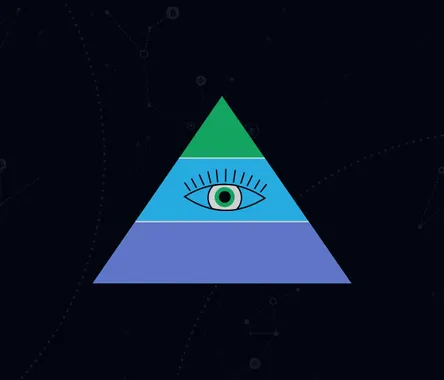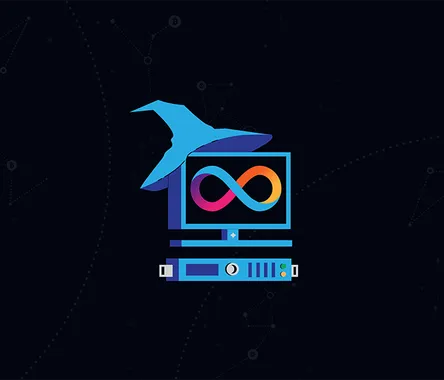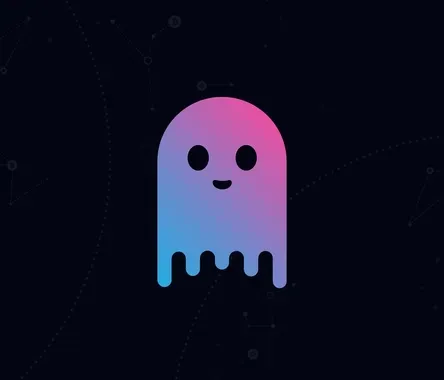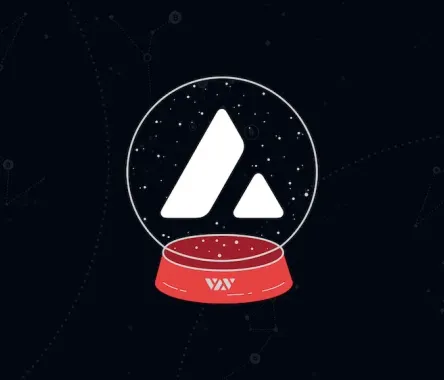What is Evmos?
Evmos stands for EVM on Cosmos. It is a scalable, high-performance blockchain powered by the Proof-of-Stake (PoS) consensus mechanism. The network is built with the use of the Cosmos Development Kit (SDK) on top of the Tendermint Core Byzantine Fault Tolerance consensus mechanism.
Being fully interoperable with the Ethereum network and all EVM-compatible environments, Evmos enables developers to use the existing familiar tools and software of the Ethereum ecosystem. Thus, they can deploy Ethereum-based applications in the Tendermint environment with lower transaction fees, higher transaction speed, and the security provided by the Proof-of-Stake consensus.
Thanks to the Cosmos inter-blockchain (IBC), Evmos is horizontally scalable and is also interoperate with other Cosmos blockchains such as BNB chain and Crypto.org.
The development of Evmos started in 2016 with a goal to provide scalability to the Tendermint consensus protocol for Ethereum or EVM-based applications. At first, it was called Ethermint. Since then, the project has changed dramatically, compared to its previous versions, and is now in a very different ecosystem than when it started.
How does Evmos work?
Evmos combines three features to create an advanced Layer-1 blockchain: the Cosmos SDK, the Application Blockchain Interface (ABCI), and the Ethereum virtual machine.
The first component, the Cosmos SDK, is the Cosmos’ blockchain infrastructure for creating blockchains with PoS or PoA (proof-of-authority) consensus mechanism. The Cosmos SDK uses a modular structure on top of the virtual machine and allows developers to use off-the-shelf blockchain models and test them before launching. In addition, connecting to other Cosmos-based blockchains from the start gives dApps access to an extended user base. This is achieved through the Cosmos' inter-blockchain communication (IBC), called the Internet of Blockchains.
The second component is the ABCI — the interface between Tendermint (the state machine platform providing Evmos with its PoS consensus mechanism) and the application running (e.g., a money market dApp). The ABCI connects the Cosmos-based consensus mechanism and dApps by invoking a request and receiving response messages from applications. In essence, ABCI is the infrastructure that allows Evmos to replace Ethereum proof-of-work with Cosmos proof-of-stake.
That said, there are two types of nodes on Evmos: validator nodes, which are responsible for checking transactions and committing new blocks to the blockchain; and full nodes, which store the full state of the blockchain and retrieve blockchain data when called.
The active Evmos set consists of the 150 validators with the highest stake of the EVMOS coins, including the delegated share. There is no minimum EVMOS amount requirement for delegators to stake for a validator. Each validator is selected based on their share relative to the total stake made by all validators.
The rewards offered on Evmos are split into several types: transaction fees, which are distributed equally among active sets of validators in EVMOS; inflationary rewards (Block Provision) are a percentage of EVMOS inflation, distributed proportionally to all active participants in the network; proposer rewards — bonus rewards of 1-5% for the validators who successfully offer a block based on consensus.
In case a validator violates the rules of the network, both their stake and that of any delegate may be subject to slashing, which motivates delegates to pass their EVMOS to validators who operate safely.
There are a number of improper actions that lead to slashing on Evmos: double-signing — signing two blocks with the same block height; downtime — the validator has skipped over 95% of the previous 10,000 blocks; and unavailability — the validator being offline for a set number of blocks. If the validator exceeds the upper limit of skipped blocks, it will be disconnected and removed from the active set. Also, there is a minor slashing for missing the vote on the proposal.
Validators that have been slashed will automatically enter the jailing period before they can rejoin the consensus. The jailing period on Cosmos is currently two days, after which the validator can send a jail exit transaction to rejoin the active set.
Finally, the third component of Evmos is EVM — the Ethereum compute engine, which operates as a decentralized computer executing and deploying smart contracts on Ethereum. Every Ethereum node runs on EVM, which is why Ethereum is sometimes called a "decentralized supercomputer": when you create an EVM application, you let it run on all Ethereum nodes.
How to use Evmos?
From a normal user's point of view, Evmos is almost no different from any other EVM compliant network. This means that to use Evmos, a user simply adds the network to an Evmos wallet such as Kepler or Metamask and connects to the desired platform for a further interaction.
Soon, Evmos will allow converting tokens that don't initially run on Cosmos. With the upcoming rollout of the Evmos EVM bridge, users will be able to transfer existing ERC-20 tokens on Ethereum, L2, and other EVM-based chains to Evmos.
As for Evmos app developers, they can use existing Ethereum ecosystem tools and software to seamlessly deploy smart contracts that interact with the rest of the Cosmos ecosystem.
Evmos uses the tokens received as Evmos fees for rewarding developers and network validators through a built-in revenue model of shared fees, the dApp Store. The dApp Store is an app store model where a portion of the revenue from app sales goes to the app store operator and a larger portion goes to the developer. Thus, the distribution of network fees will be implemented as a 50/50 split between developers and validators.
Evmos staking
The POS-based blockchain Evmos is secured by validators and delegators. Currently, the active validator set consists of 150 validators and 40% of the newly issued tokens are used to reward the active validators and their delegates. The amount of rewards is in proportion to the number of staked tokens. It takes 14 days from the request date to withdraw tokens from staking.
Validators charge their delegates a commission, which is subtracted from for the staking rewards. Each validator can set their own commission, but the network-wide minimum fee is 5%.
In addition to staking rewards from Evmos, users staking EVMOS receive tokens from many projects within the ecosystem.
The EVMOS token
The native Evmos blockchain token of the same name (EVMOS) has several functions. It is used as a management token, as incentives for using applications on Evmos; to pay gas fees, and to reward developers and network operators for their services via the built-in revenue sharing model (Evmos dApp store). EVMOS is also required to perform token registration in the ERC-20 module to integrate EVM-IBC with ERC-20.
Unlike with many other blockchain tokens, there was no presale or pre-mining for the Evmos token. The initial genesis offering was 200 million, with a total offering of 1 billion. EVMOS tokens were distributed in what is known as a "Rektdrop". It is a genesis airdrop for longtime supporters as well as for victims who got “rekt” (i.e., “wrecked”) on Ethereum. The tokens were distributed largely among users of Ethereum's most popular applications, such as Aave, Olympus, as well as users of the Cosmos ecosystem.
The initial token distribution is as follows: staking rewards — 40%, team — 25%, usage rewards — 25%, pool — 10%.
Is Evmos safe?
The main developers of Evmos are the Tharsis Labs team, which has extensive experience in distributed systems and blockchains. Here are the Twitter accounts of some of the team members: @fekunze, @akash_khosla, @liamdig, @evmchan, and @ronenkirsh.
The team is led by Federico Kunze Kullmer, a full-time Cosmos contributor since 2017, and Akash Khosla, who was previously a software engineer at Anchorage, a digital asset custodian and bank. Federico used to work on Peggy (formerly Gravity Bridge), Cosmos SDK, and IBC. Both founders have focused on growing the crypto community organically from the very beginning, making blockchain at Berkeley one of the most prominent university organizations.
Ecosystem & partners
The Evmos ecosystem includes DeFi, protocols, wallets, NFTs, and various tools. Decentralized exchanges (DEXes) built on the Evmos network include Uniswap V2 forks Diffusion Finance and Exswap, stableswap exchange Kinesis Labs, cross-chain protocol SpaceFi, and others.
Evmos has an extensive infrastructure, including bridges such as Celer and Nomad, UMA oracle, and decentralized storage solution KYVE. Because Evmos is EVM-compatible, Ethereum infrastructure projects and tools can be easily used and scaled to Evmos.
There are also several NFT projects running on Evmos, such as tofuNFT and Orbital Apes. The full list of Evmos’ ecosystem components can be found here.
What's next?
A public roadmap is under development.
Links
https://app.evmos.org/
https://docs.evmos.org/
https://commonwealth.im/evmos

 Arbitrum
+5
Avalanche
Polygon
Optimism
Boba
Evmos
Arbitrum
+5
Avalanche
Polygon
Optimism
Boba
Evmos

 Arbitrum
+2
Optimism
Evmos
Arbitrum
+2
Optimism
Evmos





